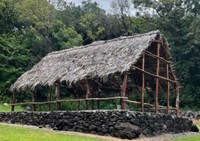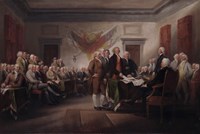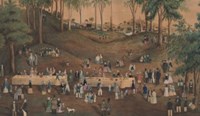- Lesson Plan (34)
- Distance Learning (4)
- Field Trips (1)
- Traveling Trunk (1)
- Castillo de San Marcos National Monument (19)
- Fort Matanzas National Monument (15)
- New Orleans Jazz National Historical Park (9)
- Devils Postpile National Monument (2)
- Haleakalā National Park (2)
- Aztec Ruins National Monument (1)
- Blackstone River Valley National Historical Park (1)
- Chaco Culture National Historical Park (1)
- Cumberland Island National Seashore (1)
- Show More ...
- Social Studies (31)
- Literacy and Language Arts (28)
- Science (9)
- Math (1)
Showing 39 results for SAN MALO ...
LESSON 2 - REMEMBERING SAN MALÓ
- Type: Lesson Plan
- Grade Levels: High School: Ninth Grade through Twelfth Grade
In the previous lesson students were introduced to the concept of Creolization, to the historical figure of San Maló as presented in the song, and to Creole/Zydeco music. In this lesson students will focus on gaining greater historical knowledge of Juan San Maló. This will be done through a deep reading of an adapted version of a thesis paper on San Maló by Erin Elizabeth Voisin.
LESSON 1 - SAN MALÓ AND INTRODUCTION TO UNIT
- Type: Lesson Plan
- Grade Levels: High School: Ninth Grade through Twelfth Grade
This lesson is an introduction to the book Le Ker Creole. Students will learn about the language of Kréyol, and about Creole culture and music, with a focus on the folk hero Juan San Maló. They will hear a song in Kréyol about San Maló and examine the lyrics to become familiar with the historic figure upon which the folk hero is based.
LESSON 6 - LEARNING KRÉYOL (CREOLE) THROUGH SAN MALÓ
- Type: Lesson Plan
- Grade Levels: High School: Ninth Grade through Twelfth Grade
Students will hear the song SAN MALÓ, sung by Kréyol speaker Sunpie Barnes. Sunpie has studied both Louisiana and Haitian Kréyol for over thirty years, so the accent is authentic. Students will review phrases learned in the previous HEY NOM lesson, and then use the lyrics of SAN MALÓ to learn additional phrases.
- Type: Lesson Plan
- Grade Levels: Middle School: Sixth Grade through Eighth Grade
Most Americans know the clarion call "Remember the Alamo!" and have a hazy recollection that the "fort" originally had been built as a Spanish mission. What is less well known outside the Southwest is that the Mission San Antonio de Valero–the Alamo–was only one of a chain of missions along the San Antonio River. Established between 1718 and 1731, these missions were built not only to spread the faith of the conquistadors, but also to serve multiple foreign policy objectives for the Spanish.
Lesson 2 - MAROONED FOR FREEDOM
- Type: Lesson Plan
- Grade Levels: High School: Ninth Grade through Twelfth Grade
This lesson uses a song from the New Orleans Jazz National Historical Park cd Remembering 300: The Arrowhead Jazz Band, and a podcast from New Orleans Public Radio: More Than A Runaway: Maroons In Louisiana, https://www.wwno.org/post/more-runaway-maroons-louisiana . It concerns the history of free settlements established by escaped slaves in isolated areas of Louisiana, and the most famous leader of those settlements, San Malo, also called St. Malo or Juan Malo
LESSON 10: LANGUAGE LESSON- NONC BELOUTE
- Type: Lesson Plan
- Grade Levels: High School: Ninth Grade through Twelfth Grade
This is a fun and catchy song. Using it in the lessons will add to the fun. Students will learn additional Kréyol phrases. It is hoped that word and phrases are beginning to sound familiar due to previous lessons. Follow same template as HEY NOM and SAN MALÓ.
He Aha Lā He Kūkulu?
PATERRE LESSON PLAN STEPS: PART 2
- Type: Lesson Plan
- Grade Levels: High School: Ninth Grade through Twelfth Grade
In this lesson students will be creating altars. This is part 2 of a lesson of two class periods of 1 hour each. Some outside class time will be needed by students for gathering items for use in altar creation. STEPS 1,2,3 must be done on a previous day.
- Type: Lesson Plan
- Grade Levels: Upper Elementary: Third Grade through Fifth Grade
PATERRES Part 1: ALTARS
- Type: Lesson Plan
- Grade Levels: High School: Ninth Grade through Twelfth Grade
This is a two part lesson. Students will read the section Paterres in the text. This relates to the artistic/spiritual practice of building small altars. They will analyze the reading through use of an organizer, and analyze photographs using the photograph analysis template developed by the National Archives. In Part Two students will create their own altars that reflect their beliefs. The altars do not have to be religious in nature.
LESSON 4 - CREOLIZATION PART 2: READING ANALYSIS
- Type: Lesson Plan
- Grade Levels: High School: Ninth Grade through Twelfth Grade
In this lesson students will closely analyze readings to which they were introduced in the previous lesson. These readings will increase their understanding of creole culture and the process of creolization. Many of the ideas will be challenging, and involve issues of racism and colonization.
ʻĀhinahina Haleakalā
- Type: Lesson Plan
- Grade Levels: Upper Elementary: Third Grade through Fifth Grade
Essential question: How did the ancestral Pueblos make their pottery? What did they use to paint their pottery, and how did they choose their designs? Students will be able to: Identify the stylistic attributes of Acoma, Jemez, San Ildefonso, and Santa Clara pottery and distinguish between the traditional Acoma, Jemez, San Ildefonso, and Santa Clara pottery design motifs and forms. Recognize and create similar objects and stylistic motifs
Peace Picnics and Community in Hopedale
- Type: Lesson Plan
- Grade Levels: High School: Ninth Grade through Twelfth Grade
In 1842, a group of like-minded individuals created a commune called Hopedale. Under the leadership of minister Adin Ballou, people came to Hopedale to live out their values, which included Christian non-resistance and abolition. In this lesson, students will read primary source accounts about anti-slavery meetings and celebrations independence in Hopedale, MA and consider how people use speeches and print to make persuasive arguments.
- Type: Distance Learning
- Grade Levels: Upper Elementary: Third Grade through Fifth Grade
- Type: Distance Learning
- Grade Levels: High School: Ninth Grade through Twelfth Grade
Are you teaching your students to identify cultural contributions and perspectives? Are you looking for an opportunity to share how the age of exploration and European colonialism influenced early America? Invite Park Rangers from Castillo de San Marcos and Fort Matanzas into your classroom through live video conferencing!
Build Your Own Fort
- Type: Field Trips
- Grade Levels: Upper Elementary: Third Grade through Fifth Grade
In this post-field trip activity, students will draw their own fort and identify its parts using historic forts such as Fort Caroline, the Castillo de San Marcos, and Fort Matanzas as examples. This activity may allow students to make connections between other sites they have visited and make comparisons between the building materials used and geographic location.











